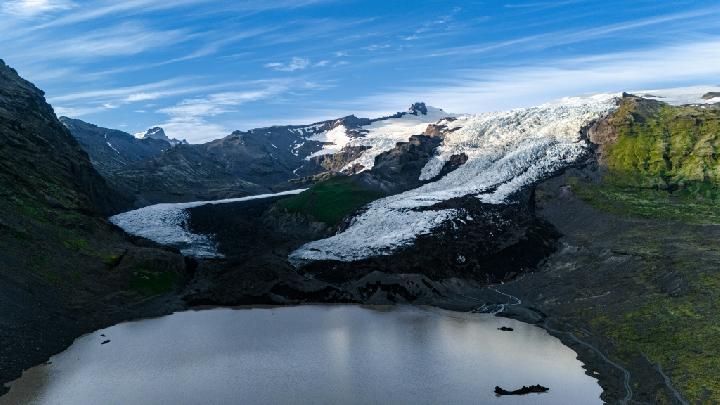TEMPO.CO, Jakarta - The Rainforest Action Network (RAN) and The Tree Map provided satellite image evidence of the widespread deforestation driven by palm oil plantations in the Rawa Singkil Wildlife Reserve, Aceh. Rawa Singkil Wildlife Reserve is known as the last peat swamp forest in the western part of Sumatra that is still pristine, and is also a habitat for around 1,500 or 10 percent of the remaining Sumatran orangutan population.
RAN and The Tree Map used the Pliades Neo satellite network from Airbus to capture the conditions of the Rawa Singkil Wildlife Reserve from above, from June to September 2024. The resulting images have ultra-high resolution (up to a scale of 30 centimeters).
The data was then combined with a series of satellite images from TRipleSat (21 AT) since June 2016 and satellite images from Planet/NICFI since December 2020. Each is supported by image resolutions up to 80 centimeters and 5 meters. As a result, they were able to measure the extent of current deforestation and track the scale of illegal palm oil plantations operating within the wildlife reserve.
According to David Gaveau from The Tree Map, this is the first time that the satellite image series is detailed enough to capture individual oil palm trees, even their saplings. Therefore, the map reveals a complete picture of the crisis unfolding within the Rawa Singkil Wildlife Reserve.
"These satellite maps enable people to document violations that were previously overlooked by public satellite data, providing unexpected clarity and transparency on this situation," he said as quoted from an article uploaded on Nusantara Blog on the Nusantara Atlas website, Monday, 11 November 2024. Gaveau was contacted for reconfirmation on Tuesday, 12 November 2024.
The Airbus satellite imagery revealed the palm oil plantations in three stages of planting: plantations with closed canopies, semi-closed canopies, and open canopies. Planted in a triangular pattern with a spacing of 9 meters between each other, the young oil palm trees have a canopy diameter of 0.5 to 3 meters, making the surface of the cleared forest area visible as the plantation.
In the planting phase with closed canopies, mature oil palm trees have a measured diameter of 7-10 meters, with overlapping fronds creating a dense star-shaped canopy. The age of the trees is estimated to be at least 4 years and in the production stage.
The semi-closed canopy phase represents a transitional phase, with trees about 3 years old and canopy diameters of each tree ranging from 4-6 meters. They begin to cover the ground surface and start production.
An analysis of the map by The Tree Map, a technology company that owns the independent geoplatform Nusantara Atlas, stated that 2,577 hectares of the Rawa Singkil Wildlife Reserve forest have been cleared since June 2016. 1,915 hectares (74 percent) of which have disappeared, although they have exceeded the European Union Deforestation Regulation deadline on 31 December 2020. The EUDR does not tolerate products that contribute to deforestation by banning them from entering the European market.
 Satellite map showing peat swamp forest cover in the Rawa Singkil Wildlife Reserve, Aceh, and deforestation occurring within it in June 2016. The map is provided by The Tree Map.
Satellite map showing peat swamp forest cover in the Rawa Singkil Wildlife Reserve, Aceh, and deforestation occurring within it in June 2016. The map is provided by The Tree Map.
"In total, 652 hectares of active oil palm plantations, including 453 hectares that are already in production, are located within the wildlife reserve," said Gaveau.
The Director of Forest Policy at RAN, Gemma Tillack, referred to the Rawa Singkil Wildlife Reserve as one of the last remaining pristine ecosystems in the world. However, she stated that the area has experienced deforestation at four times the rate between 2021 and 2023.
New Gap in Palm Oil Laundering
The ongoing destruction, according to Tillack, serves as an alarm for global companies, banks, and consumers. "Our data shows that illegal cooking oil from Rawa Singkil has infiltrated the international supply chain, threatening iconic species like the endangered orangutans," she said.
RAN's field investigation revealed that several popular products are made using this illegal cooking oil. Some major brands are implicated, as well as some financial institutions. The companies absorbing crude palm oil supplies from the Rawa Singkil Wildlife Reserve include Royal Golden Eagle Group (Apical), Musim Mas Group, and Permata Hijau Group.
RAN's investigation also noted an increase in a new loophole in palm oil 'laundering,' where large land speculators hide behind oil palm farmers to carry out deforestation. "In September-October 2024, we documented the illegal operations of land speculators who can be identified with satellite imagery within the Rawa Singkil Wildlife Reserve," a separate statement from RAN in the article 'Orangutan Capital' Under Siege dated 10 November 2024 read.
Evidence from the Ground
Established in 1998, the Rawa Singkil Wildlife Reserve is recognized to be increasingly under pressure. As previously disclosed by the Aceh Forest and Environment Preservation Foundation (HAkA) to Tempo in July, the conservation area within the Leuser Aceh Ecosystem is shrinking not only through legal land releases but also through illegal deforestation.
As known, the Rawa Singkil Wildlife Reserve was designated as 102,500 hectares according to the Minister of Forestry Decree Number 166 of 1998. However, through several changes, the latest being Decree Number 6616 of 2021, its size was declared to be 82,188 hectares.
HAkA reported from its monitoring that from early 2019 to June this year, the loss of forest cover in the Rawa Singkil Wildlife Reserve had reached 2,030 hectares, equivalent to more than seven times the size of the Senayan GBK sports complex in Jakarta.
 Deforestation in the Rawa Singkil Wildlife Reserve. Special
Deforestation in the Rawa Singkil Wildlife Reserve. Special
"One can imagine, a wildlife reserve that should be the most sacred area for conservation and should be protected is instead shrinking every year," said Rubama from HAkA.
As one of the global biodiversity hotspots, the peat swamp of Rawa Singkil is seen as crucial for climate stability. This peat swamp stores a large amount of carbon in its soil. Clearing and drying it is seen as risking releasing all that carbon into the atmosphere and turning the area into a new forest fire hotspot, with severe consequences for the health of the local community.
 Map of the Rawa Singkil Wildlife Reserve. Special
Map of the Rawa Singkil Wildlife Reserve. Special
HAkA, along with LBH Banda Aceh and several other organizations, have expressed doubts that the deforestation occurring is the work of the hands of residents of the 63 villages surrounding the wildlife reserve. "Deforestation for palm oil plantations with neat canal construction and heavy equipment deployment in the area cannot be done by ordinary people," they said.
Upon receiving reports and evidence of deforestation in the Rawa Singkil Wildlife Reserve, the Director General of Law Enforcement at the Ministry of Environment, Rasio Ridho Sani, admitted to carrying out an investigation. He mentioned that the law enforcement operation has been ongoing for several months and suspects will be announced next week. "We will elevate the status to investigation for the case of encroachment on the Rawa Singkil Wildlife Reserve in Aceh," said Rasio at the Manggala Wanabakti Building in Jakarta, Tuesday, 12 November 2024.
Editor's Choice: Greenpeace: Indonesia's Forests Turned into Palm Oil Plantations Dramatically Increased in the Last 5 Years
Click here to get the latest news updates from Tempo on Google News

 3 months ago
99
3 months ago
99













































